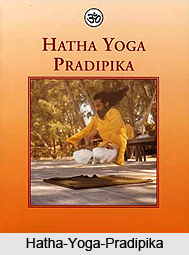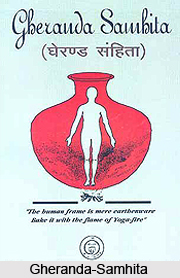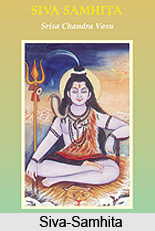
Far from being frozen knowledge and codified instructions, it is a science kept alive by the yogis who have mastered it and who in turn transmit their knowledge to their deserving students. Sampoorna Hatha Yoga is a continuing expression of this tradition. That is why it is so effective for evolution of Ardent practitioners. The earliest classical work on yoga is unanimously considered as "Yoga sutra of Patanjali." This treatise laid the foundation for all the manifestations of Yoga formed thereafter. Hatha Yoga has developed following this very groundwork.
Some experts view the existence of hatha-yoga to be a tradition whose roots extend back at least several thousand years, with its earliest known authentic text being the Yoga-Karunta. This work took its shape in Varanasi. "Krishnamacharya" claims to have come across a 1,500-year-old manuscript of this text. `The style of language [being] derived from an oral tradition predating classical Sanskrit, and possibly going back as far as 5,000 years back.
 The principal systematic treatises of hatha-yoga, such as the Hath yoga Pradipika, Siva-Samhita and Gheranda-Samhita, are presented, not as innovative documents, but as more-or-less precise renderings of a traditional doctrine that stretches far back into the ancient past, being set within an elaborate mythological framework. The central figure in hatha mythology is all powerful-Shiva and the philosophical concept of Shiva Shakti. It is said, that the Siva-Samhita is presented as though spoken by Siva. The Maha yogi (Supreme yogi) and other hatha manuals invariably begin with a laudatory dedication to Shiva, each claiming to offer the authentic teaching of hatha-yoga as first given to Parvati by her divine consort.
The principal systematic treatises of hatha-yoga, such as the Hath yoga Pradipika, Siva-Samhita and Gheranda-Samhita, are presented, not as innovative documents, but as more-or-less precise renderings of a traditional doctrine that stretches far back into the ancient past, being set within an elaborate mythological framework. The central figure in hatha mythology is all powerful-Shiva and the philosophical concept of Shiva Shakti. It is said, that the Siva-Samhita is presented as though spoken by Siva. The Maha yogi (Supreme yogi) and other hatha manuals invariably begin with a laudatory dedication to Shiva, each claiming to offer the authentic teaching of hatha-yoga as first given to Parvati by her divine consort.
 The mythic story concerning Parvati`s initiation by Shiva has several variant forms, but most agree that it took place near to the coast of a remote island. A common version has it that Parvati fell asleep during the lesson, and that Siva`s words were overheard by a powerful sage named Loke Svaraz (`Lord of the world`), who had transformed himself into a Fish and was hiding in the sea. Siva then acknowledged the greatness of Lokesvara, who subsequently became known as Matsyendra or Matsyendranatha (`Lord of fish`), and granted him the authority to perpetuate the hatha doctrine. Matsyendra then initiated his disciple Goraksa, who in turn initiated his own disciples, and so the ancient lineage began. This story of origin of Hatha has been repeatedly conveyed from generation to generation and in the revered text as the truth. But nevertheless it signifies the powerful influence of Shiva in this ancient branch of yoga.
The mythic story concerning Parvati`s initiation by Shiva has several variant forms, but most agree that it took place near to the coast of a remote island. A common version has it that Parvati fell asleep during the lesson, and that Siva`s words were overheard by a powerful sage named Loke Svaraz (`Lord of the world`), who had transformed himself into a Fish and was hiding in the sea. Siva then acknowledged the greatness of Lokesvara, who subsequently became known as Matsyendra or Matsyendranatha (`Lord of fish`), and granted him the authority to perpetuate the hatha doctrine. Matsyendra then initiated his disciple Goraksa, who in turn initiated his own disciples, and so the ancient lineage began. This story of origin of Hatha has been repeatedly conveyed from generation to generation and in the revered text as the truth. But nevertheless it signifies the powerful influence of Shiva in this ancient branch of yoga.
Shiva represents the transcendent Self (Paramatman), who, according to yoga philosophy, is every individual`s ultimate identity. Parvati also symbolizes the Jivatman- "The living self". If we take Parvati to stand for each individual self, then the fact that she falls asleep in the story of hatha-yoga`s origin suggests that, ordinarily, we are not awake enough to hear or comprehend the voice of our true Self. And hatha yoga is all about achieving glory and ultimate achievement for those who cherish it.



